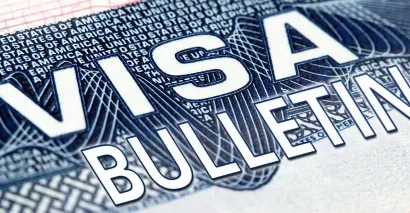Key Highlights
The recent US Visa Bulletin for December 2025 is not much of a relief to those Indian nationals who have the US permanent residency in their dreams. Although some of the categories of the employment-based green card queue registered slight improvements, the majority of applicants, particularly those in the family-based categories, will stay in long queues.
Understanding the Visa Bulletin
The monthly Visa Bulletin is a publication that is issued by the US Department of State to help update applicants on the status of the green card quotas as well as the wait times for each country and category. Two key dates matter:
-
Filing Dates: The first date that applicants can file green card paperwork.
-
Final Action Dates: The date by which the US will actually give green card approval on the applications.
Also Read: US Immigration Crackdown: Economic Contradictions and Industry Impact
Why Green Card Waits Are So Long for Indians
Green card queues are usually incredibly long for Indian citizens. In this case, we discuss why such long wait times happen and why the process has become such a significant problem for so many families and professional people.
-
The annual family-sponsored visa quota is 226,000, and no nation is supposed to take more than 7 per cent of the entire quota.
-
The pressure (primarily in job-based categories) is so great in India that there is a backlog of work of up to 10 years long, as visas are issued by priority date.
-
As of 2025, the queue remained in place among both skilled professionals and families, particularly in the overcrowded EB-1 and EB-2 lines.
Main Changes—December 2025 Visa Bulletin
The State Department issues numbers that impact thousands of aspiring immigrants every month. This section contains the most important changes that occurred in the December 2025 Visa Bulletin, with emphasis on the changes that occurred and those that stayed in place.
Employment-Based Green Cards: Slight Date Progress
The employees in the tech sector, scientists, and business leaders are keenly observing any progress in employment-based green card categories. This update is a modest step in the right direction regarding EB visa cutoff dates, as far as Indian applicants are concerned, and what the change actually means in reality.
|
Preference Category |
December 2025 Final Action Date |
Last Month |
Progress |
|
EB-1 (Priority Workers) |
March 15, 2022 |
Feb 15, 2022 |
+1 month |
|
EB-2 (Advanced Degree) |
May 15, 2013 |
Apr 1, 2013 |
+1.5 months |
|
EB-3 (Skilled Workers) |
Sept 22, 2013 |
Aug 22, 2013 |
+1 month |
|
Other Workers |
Sept 1, 2013 |
Aug 22, 2013 |
+1 month |
-
EB-1 and EB-2 both were advanced, which is why a somewhat greater number of professionals and researchers can now submit and obtain approvals during this winter.
-
EB-5 unreserved advanced significantly, with very rich investors having the cutoff brought forward several months, but any set-aside investor routes (rural/high unemployment/infrastructure) indicate no such waiting list.
Also Read: US May See Net Loss in Immigration for First Time in 50 Years
Why Did Some EB Categories Move Forward?
Applicants would want to know why the EB cutoff dates are changed, whether by a little bit or not. This part examines the drivers of changes in 2025 and dwells on the legal and policy anomalies that cause small gains in some groups.
-
The US government pushes such dates forward in small blocks when no visa numbers are utilised, once all limits are factored in, usually based on trends in the world demand and government quotas.
-
The recent months experienced some slack in the usage of EB-5/EB-1 globally, which allowed releasing a few additional places to India.
-
Nevertheless, the shifts are small with an enormous historic backlog and a small amount of space (only about 7 per cent of employment-based visas go to a single country).
“Dates for Filing” vs. “Final Action Dates”
Having two timelines to follow, the Visa Bulletin is hard for many applicants. Here is where the confusion is cleared, as they elaborate on what these categories mean, how they influence the application strategy, and why it is so essential to review both every month.
-
Dates of Filing allow applicants to file their paperwork and secure priority until it is time to apply.
-
Final Action Dates are the days that designate those who receive green cards that month.
-
The majority of them have to verify both dates before celebrating an advancement in a queue.
Also Read: US Immigration News: Student Visa Pause, China Crackdown, UK Surge
What Should Indian Applicants Do Next?
Any slight modification in the Visa Bulletin can open new possibilities for action. Learn what to do in case your category changes, and receive suggestions on the paperwork, legal counsel, and how to maximise your green card opportunities.
-
Test both tables monthly; even minor progressions can result in strategic opportunities (e.g., a shift between EB-2 and EB-3 in case of date shifts).
-
Provided you are qualified by the Date of Filing, file the Adjustment of Status or NVC documents as early as possible to ensure that you get in the queue.
-
Families under F2A also experience a slightly less difficult experience of document submission, and all other types are rather slow.
-
It is strongly advisable that professional legal advice should be sought, particularly when one is dealing with a complicated category or priority date swap.
Conclusion
The US Visa Bulletin for December 2025 leaves Indian green card hopefuls waiting, with only slight advances in some employment-based categories and virtually no movement for family-sponsored visas. Staying informed, prepared, and ready to respond to minor shifts in visa cutoff dates remains the key strategy for all applicants in the backlog. For official and detailed information on the US Visa Bulletin and filing procedures, visit the U.S. Citizenship and Immigration Services (USCIS) website. To know more about the US visa Bulletin, visit TerraTern now!








